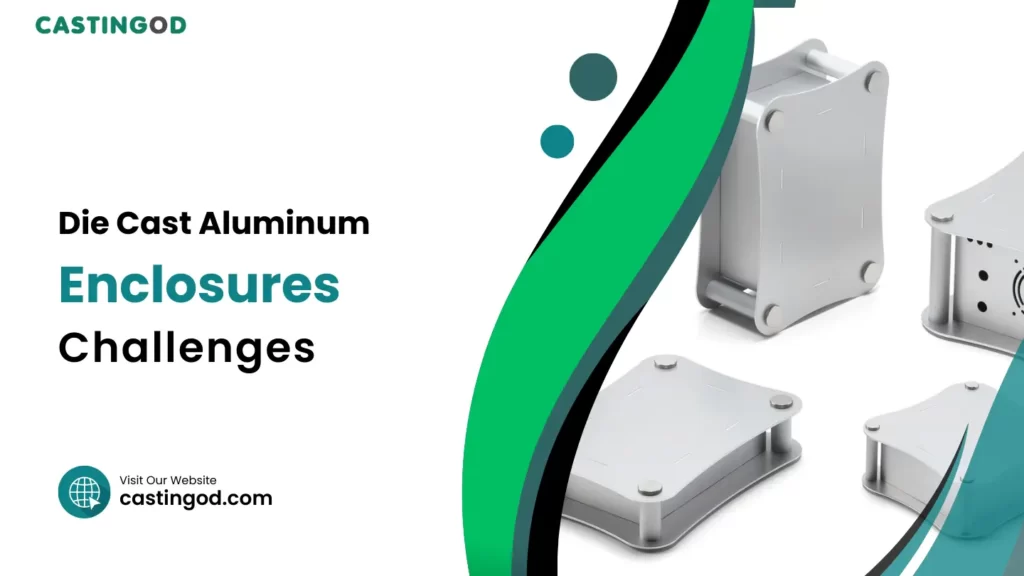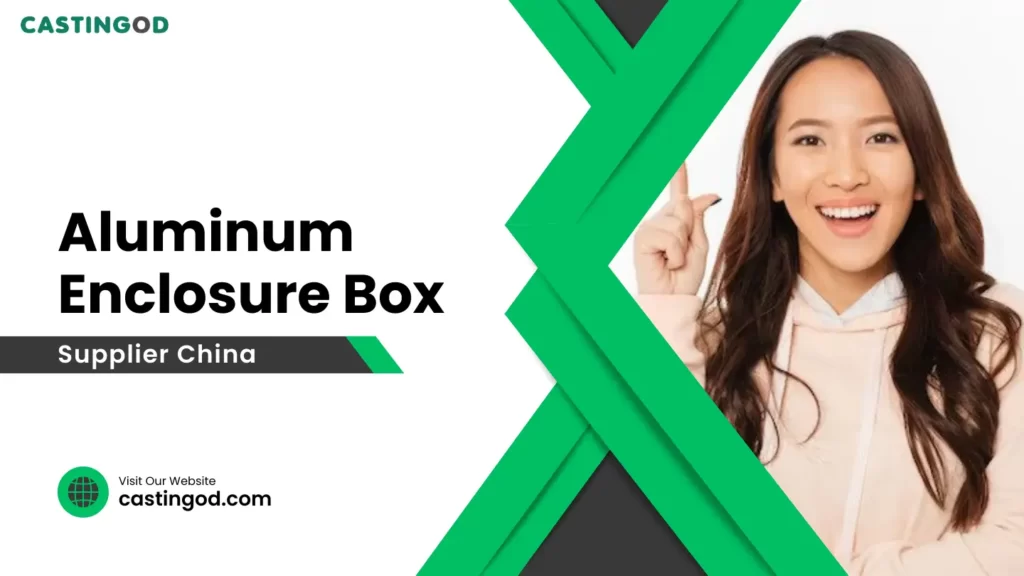The global die cast aluminum enclosure box market is projected to expand at an 8.5% CAGR from 2023 to 2030. The need for excellent die casting products and technology is growing in popularity across a variety of sectors. These developments are the main drivers of market expansion.
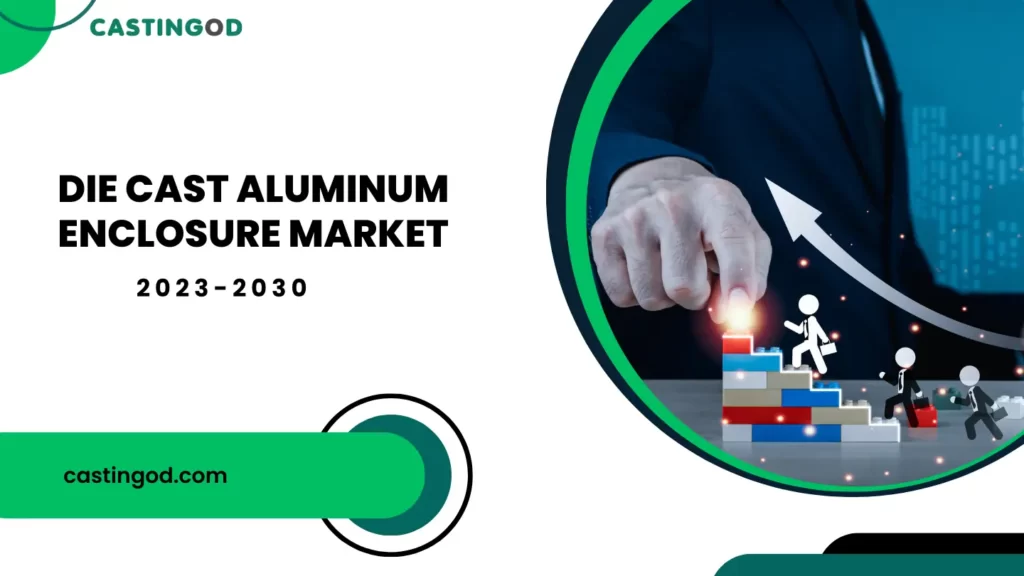
Die-cast aluminum enclosures are created using the die casting method. It results in metal products with outstanding mechanical qualities, great dimensional accuracy, and superb surface quality. Die-cast aluminum enclosures have industrial applications such as:
- Automotive
- Electrical
- Lighting components
- Consumer electronics, etc.
What is a Die cast Aluminum Enclosure?
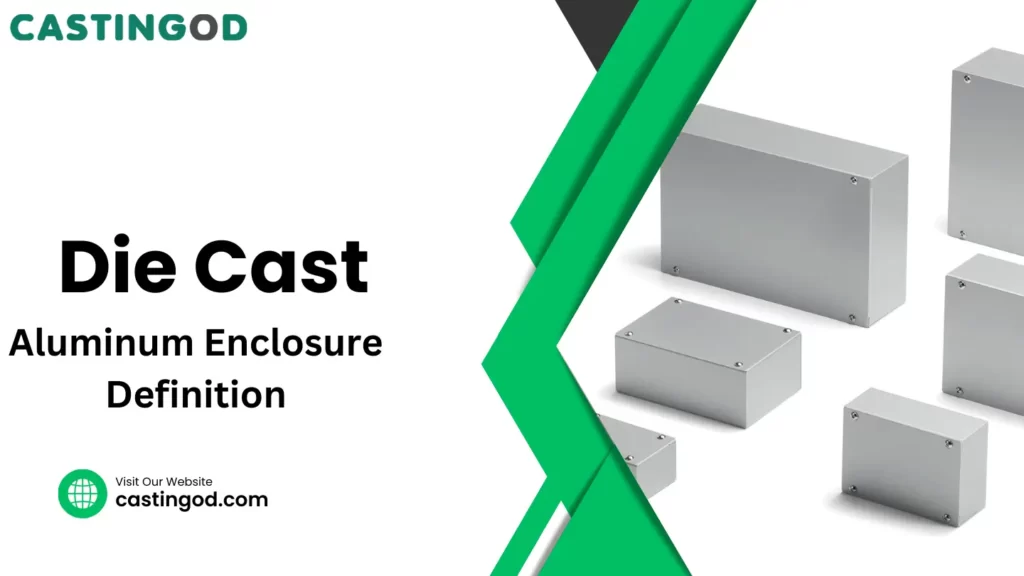
The term “die casting aluminum enclosure” refers to a specific type of structure or case made using the die casting process. This process forces molten metal into a mold at high pressure to generate the enclosure’s precise shape.
Why aluminum is a good material to die cast enclosures?
Since aluminum is light weight, and has good strength, they are ideal for usage in parts which need good mechanical stress and shocks.
Aluminum is a flexible material for electrical devices as it generates a lot of heat due to its strong thermal conductivity, which supports heat dispersion. Die cast aluminum enclosures are ideal for use in industrial and marine conditions because they are highly corrosion-resistant.
Die Cast Aluminum Enclosure: Types
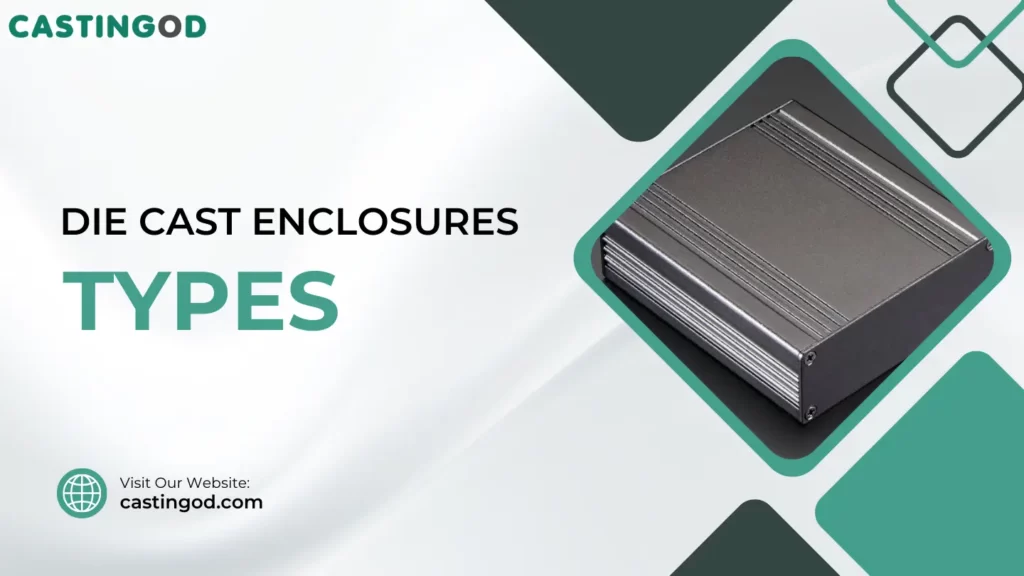
In many different industries, die cast aluminum enclosures are used to store and safeguard electronic parts, machinery, and equipment. Here are some popular die cast aluminum enclosure types:
1. Standard Die Cast Aluminum Enclosures
A “standard die cast aluminum enclosure” is a die cast aluminum alloy enclosure that typically complies with industry-standard requirements and characteristics, including:
- IP (Ingress Protection) ratings
- EMC (Electromagnetic Compatibility)
- RFI (Radiofrequency Interference) shielding
In a number of industrial and commercial situations, these enclosures are used to store and safeguard electrical components, machinery, and devices.
These enclosures are usually constructed to be sturdy, corrosion-resistant, and capable of giving protection from external factors like dust and moisture, though the actual standards and requirements vary depending on the manufacturer and purpose of use.
2. NEMA 4x Die Cast Aluminum Enclosures
The phrase “NEMA 4X die cast aluminum enclosure” refers to an enclosure made of die cast aluminum that is protected by the NEMA 4X standard set by the National Electrical Manufacturers Association.
The NEMA 4X standard describes the level of protection offered by an enclosure against a variety of environmental factors like corrosion, dust, and water ingress.
Die cast aluminum NEMA 4X enclosures have great usage in wastewater treatments, food processing, marine environments, and other industrial applications.
3. Custom Die Cast Aluminum Enclosures
Custom die cast aluminum enclosures are specialized housing units made to satisfy particular and distinctive specifications.
These enclosures are made to meet specific dimensions, features, and mounting options while enclosing electronic components, equipment, and devices.
How to design Die Cast Aluminum Enclosures?
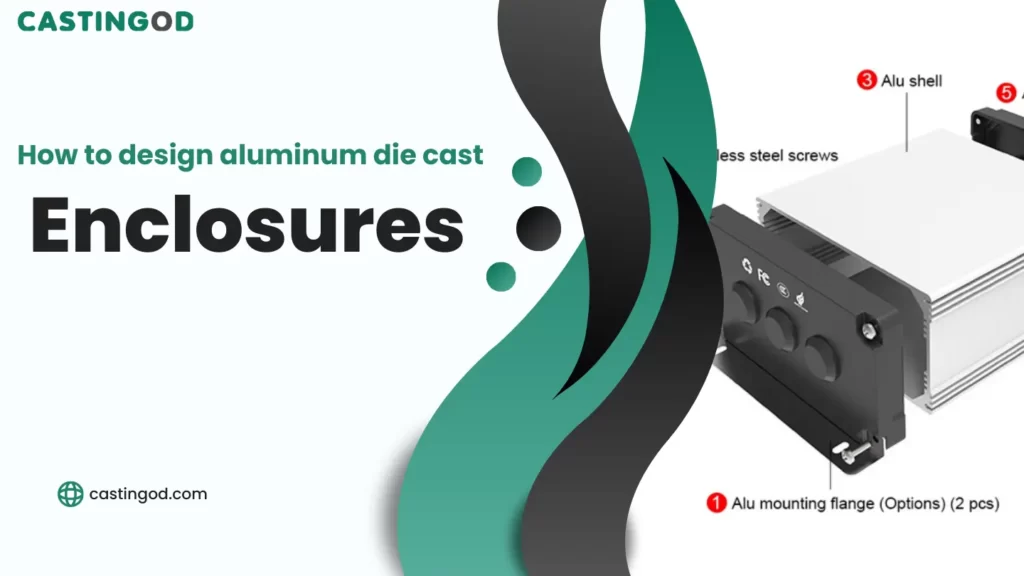
Die-cast aluminum enclosure design goes through 8 stages. The following are some important design factors for die-cast aluminum enclosures:
Material Selection
Die-cast aluminum is a material of choice due to its strength, resistance to corrosion, and superior heat dissipation capabilities. As 2023 approaches, it’s important to take into account the most recent developments in aluminum alloys and finishes to make sure that your enclosure design is both durable and cutting-edge in terms of technology.
Aluminum Alloys
The characteristics of the enclosure are greatly affected by the selected aluminum alloy. Consider using alloys like:
- ADC12
- A380 for enclosures that are both light and durable.
- Alloy 6061
- 6063 can be a better choice if corrosion resistance is an issue.
Size and Shape
The die cast components that must be housed will determine the enclosure’s size and design. Make sure there is enough room for all internal parts, and if necessary, additional space or alterations can be made.
Wall Thickness
The enclosure’s uniform wall thickness is essential for both structural stability and heat dissipation. However, they can add to the overall weight and cost. In comparison with thin walls, thicker walls offer more effective protection and greater dissipation of heat.
Environmental Conditions
Consider the enclosure’s operating environment. Will it be subjected to high temperatures, humidity, dust, or caustic substances? Pick a strong aluminum alloy and use it in your design.
EMI/RFI Shielding
Design the enclosure with shielding elements, such as conductive gaskets or coatings, to protect the inside components if EMI or RFI is concerned.
Aesthetic Considerations
If the enclosure seems exposed to users, pay attention to its aesthetics. Include labeling, finishing, and branding components that complement the entire product design.
Compliance and Standards
Depending on your market and application, make sure the design conforms with pertinent industry standards and certifications, such as
- IP (Ingress Protection)
- NEMA
- UL listed
- CE
7 Design Challenges During Die Cast Aluminum Enclosures
Designers must overcome a number of challenges while creating die-cast aluminum enclosures to guarantee the finished product has the specified features, efficiency, and affordability. Die-cast aluminum enclosure design challenges that are common include:
1. Heat Management
Aluminum enclosures are commonly utilized in applications containing heat-generating components. It can be difficult to control heat and ensure sufficient ventilation and cooling.
2. Machining Requirements
Die-cast aluminum enclosures sometimes require further machining work to add precise blind holes, threads, or other characteristics. Costs can be decreased by minimizing the requirement for extra machining.
3. Gasket Sealing
Effective sealing can be difficult to achieve, especially for enclosures that encounter harsh external conditions. The alignment and design of the gasket must be correct.
4. EMI/RFI Shielding
Protection from radio-frequency interference (RFI) and electromagnetic interference (EMI) can be challenging. Sensitive electronic die cast components require proper shielding design.
5. Surface Finishes
It can be difficult to get the desired surface finish. It’s essential to clearly state the finish specifications in the design.
6. Corrosion Resistance
It can be challenging to deal with corrosion resistance, particularly in outdoor or challenging conditions. The right choice of materials and surface finishing are important.
7. Sustainability
Designing sustainably and taking the environmental effects of materials and industrial processes into account may sometimes be difficult.
7 Steps To Choose Aluminum Die Cast Enclosure Box Supplier
Effective collaboration, communication, and manufacturing process knowledge are necessary when working with aluminum die casting companies. Here are some methods and tips to assist you in collaborating effectively with aluminum die casting factories:
Project Management
Your project’s goals, demands, and requirements should all be straightforward. Don’t forget to include CAD files, ideas, and material specifications in your comprehensive design documentation.
Select the Right Company
Make sure the die casting company you choose is reputable and has a history of manufacturing high-quality die casting parts. Think about factors like expertise, aptitude, tools, and quality assurance procedures.
First Consultation
Set up a meeting or discussion with the manufacturer to go over the goals, objectives, and specifications of your project. You can ask questions about your expectations to make sure they understand your needs completely.
Design and Manufacture of Tooling
Discuss and give your approval for the molds or dies that will be used during the die casting projects. The quality of the finished components is greatly influenced by the design of the tooling.
Standards of Excellence
Verify that the manufacturer complies with industry quality guidelines and certifications, such as ISO 9001 or additional certifications that are relevant to your application.
Budgeting and Costs
Create a clear cost structure by working closely with the factory. Learn about the costs’ influencing aspects and look at cost-saving options.
Lead Time and Delivery
Lead times and delivery deadlines must be specified in detail. Take into account your timeframe as well as things like delivery, customs, and possible delays.
Working with aluminum die casting companies involves teamwork and open communication. It is to guarantee the manufacturing of excellent die casting parts that satisfy your project’s specifications and expectations.
Conclusion
Do you need die casting aluminum electrical enclosure box near you? Why not castingod.com? Castingod is number one die casting parts supplier in USA.

